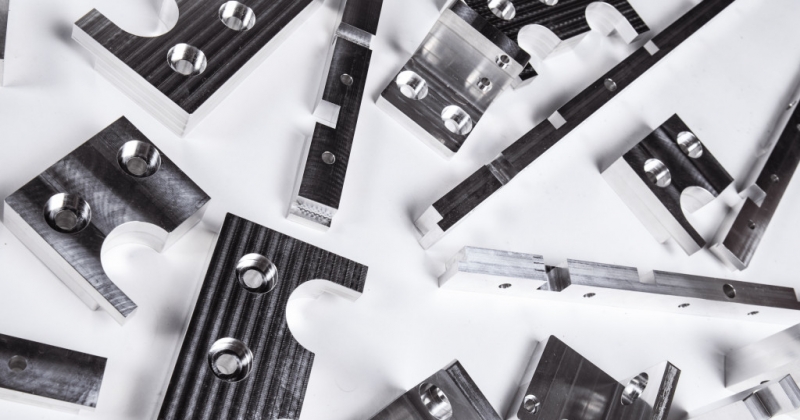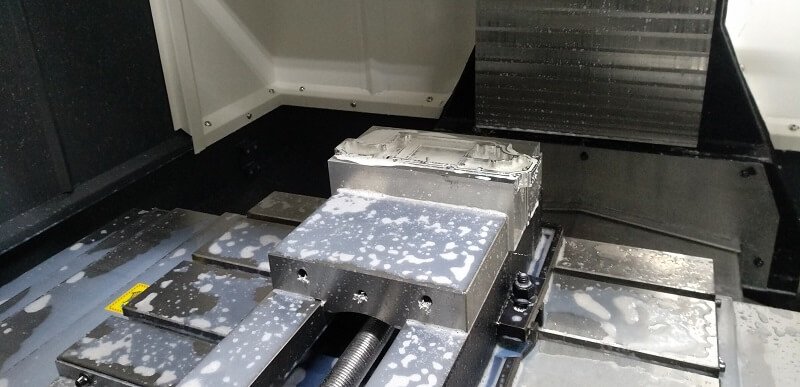CNC machining is essentially a subtractive technology for manufacturing prototypes and parts. This means that its operation will result in the removal of material. We can use this process on a range of materials, such as metals and plastics. CNC turning and milling are different from other production technologies that use computer numerical control. In both cases, we start with a larger block of material. Then we cut it open until we get the desired product.
Calculating the cost of CNC machining involves various cost factors, including labor, machinery, complexity, materials, and so on. CNC machining provides one of the most cost-effective options for on-demand production, and it has good practicality in machining metals and other materials. But customers still need accurate price estimates before the start of a new project. This article will break down the factors that calculate the cost of CNC machining and provide some tips for optimizing the budget.
CNC Machining And Related Cost Factors
In the CNC machining industry, one part A may be much more expensive than another part B. Although part B may be smaller than part A, it may be more expensive than the larger part A. This shows that pricing does not only depend on the size of CNC machining. It mainly depends on a combination of different factors, including labor, machine cost, tools, materials, settings, and tool wear. It is difficult to obtain an accurate assessment of each category. However, when proposing the final price, you should have a general understanding of how we compile them.

Material Costs
This is a very important factor that machinists consider when calculating the cost of CNC machining. Since CNC machining is a subtractive process, it often uses more materials than the final product. The mechanic buys these materials by block and calculates the price of each block. The two main materials used in CNC machining are metal and plastic. Let’s take a closer look at both of them:
– Metal
Common metal types used in CNC machining include aluminum 6061, stainless steel 303, and brass C360. Machinists use 6061 aluminum most often because of its economical price and good machinability. Stainless steel 303 and brass C360 have higher machinability, so the cost is higher.
– Plastic
Because the average price of bulk materials is lower, and because of the lower hardness and shorter processing time, plastics used for CNC processing are cheaper. The bulk cost of plastics such as ABS, nylon 6 and POM (Delrin) is about the same as aluminum 6061, although their single-piece cost may be slightly higher. Plastics like PEEK are very expensive and should only be used when absolutely necessary.
As a result, the cost of manufacturing harder materials is higher than other materials due to poor workability. In addition, more expensive material types may be more durable and perform better. CNC machining engineers may decide to use ABS and aluminum because of its high machinability, while stainless steel and titanium are more difficult to machine.
Machining Cost
Another factor that affects the cost of CNC machining is the type of equipment, tools, or machines used for production. The idea is that the simpler the machine used, the lower the cost per unit time. This is obvious, because the production cost of ordinary CNC lathes is lower than that of vertical CNC lathes, while CNC machining centers are more expensive than milling machines.
- 3-axis and 5-axis milling and lathes provide flexibility for designing parts with complex geometries and tight tolerances. The processing cost depends on the type of machine and the number of hours it will run, usually called machine time. The store has set hourly rates for running different types of machines. These costs have nothing to do with labor. The advantages provided by each machine depend on the geometric complexity of the part. Before sending the design to the machine shop, the design should be optimized as much as possible.
Part Features
The features of a part refer to the geometric shape and complexity in the design. For parts with complex features, more programming time, running time and setup time are required. When considering the complexity of the part, if the design of the part is complicated, the machining process will become more difficult. Complex parts may also require specialized tools, multiple settings and machines to manufacture, thereby increasing the cost of the final product. It is beneficial to simplify the design as much as possible to reduce the cost of each part. Simplify the design by eliminating unnecessary functions. In some cases, it may be more cost-effective to split the design into multiple parts and then assemble it.

Labor Costs
Once the CNC machine is set up, almost no manual intervention is required. The machinist, engineer, or programmer must perform certain steps. These include:
Programming:
This part of labor costs is the most expensive, because it involves design and digital costs. You need to outsource your product to a designer to make a CAD file. You can bypass this by doing it yourself. Next is the manufacturing engineer, who will check the repeatability of your design and provide suggestions for improvement. The last person is a programmer, who converts CAD files into CAM files to help CNC machine tools understand the design. All this expertise comes at a price. Some AutoCAM technologies will automatically program the tool path, which greatly reduces the dependence on labor in this step of manufacturing.
Setup:
The machinist will set up the machine for production. Someone must always cut the blank, place it in the workpiece holder, and then load the tool into the tool changer. The cost depends on the number and complexity of the parts produced.
Quality Control:
As the old saying goes… “You get what you pay for”. The price that ISO 9001-certified companies will charge slightly increases, reflecting the fact that each processed part must undergo additional quality control checks before shipment.
Working with a company that really cares about quality and has a robust quality assurance process (such as SANS Machining), it is possible to distinguish the difference between only 1% of the batches being inspected and 100% of the batches. An excellent example of “you get what you pay for”.
There is no doubt that quality is worth the price. If you are willing to place an order with the cheapest supplier you can find, please expect that the final product you receive is worth the money.
Post-processing
After production, your production will require some assembly and transportation to your desired location. These processes will involve some manual labor that will incur additional costs.
Surface Treatment
Surface treatment can improve the final surface of the part, remove any tool marks or roughness, achieve aesthetic purposes and provide wear resistance. The machining workshop provides a variety of surface treatments for different materials. Surface treatment improves the appearance of CNC machined parts and the ability to withstand harsh environments. Although they are advantageous, they increase processing costs. The surface finish depends on the application of the part. A qualified machine shop can help determine the most prudent choice.
All these factors are taken into consideration when calculating the cost of CNC machine. To learn how to further reduce these costs, you should check out the next section.
How To Reduce CNC Machining Costs
In most cases, after estimating the cost of CNC machining, CNC machining may make the customer’s cost higher, especially if they do not produce a large number of products. You can adjust the CNC machining cost to suit your budget in the following ways:
1. Rethink The Material
The material you will use for the product is an important determinant of the cost of CNC machining. Before selecting materials for the production process, you should consider the price of the materials. In addition, the workability of the material is very important. This determines the processing time, which in turn affects the hourly rate of the production process in the CNC machining workshop.
2. Optimized Design
The design of the manufacturing process is also a very important factor in the calculation of CNC machining costs. The complexity of the design determines the length of the processing time, which in turn affects the cost. To minimize the complexity of the design, you can consider the following questions before sending the design for quotation:
– Is my part optimized using design guidelines for machinability?
– Are all the features in my model required? Can I delete or simplify any of them and still retain the full functionality of my part?
– Can I split my design into multiple parts that are easier for CNC machining, and then assemble it?
– Is there a way to modify my design to eliminate the need for multiple machine settings or special tools?
– Is there a cheaper or easier-to-process material that can meet my design requirements?
3. Other Factors
As a customer, it is useful to know what other factors besides the quality control measures already mentioned will affect the price you pay. As listed below, many of these factors are within your control:
ISO 9001 certification-are your suppliers really committed to their quality commitments?
Batch size-do you want 1-off or 1,000-off?
Outsourcing operations-do you want to provide anodizing treatment for the parts, or purchase it yourself?
Material selection-the processing cost of aluminum is much lower than that of steel.
Delivery time-how urgency do you need the components?
Tolerances-tighter tolerances increase higher risks and require additional inspection time.
Fixture – Does your part have a complex contour and require a customized workholding solution to fix it during machining operations?
Conclusion
For the production of high-volume or small-volume parts, it is important to understand the machine, labor requirements, part complexity, surface treatment and production time. However, the process of processing cost estimation is error-prone and requires careful evaluation.
SANS Machining is concentrated on CNC machining manufacturing, prototype machining, low-volume machining parts manufacturing, metal fabrication, and parts finishing services, provide you the best support and services.


